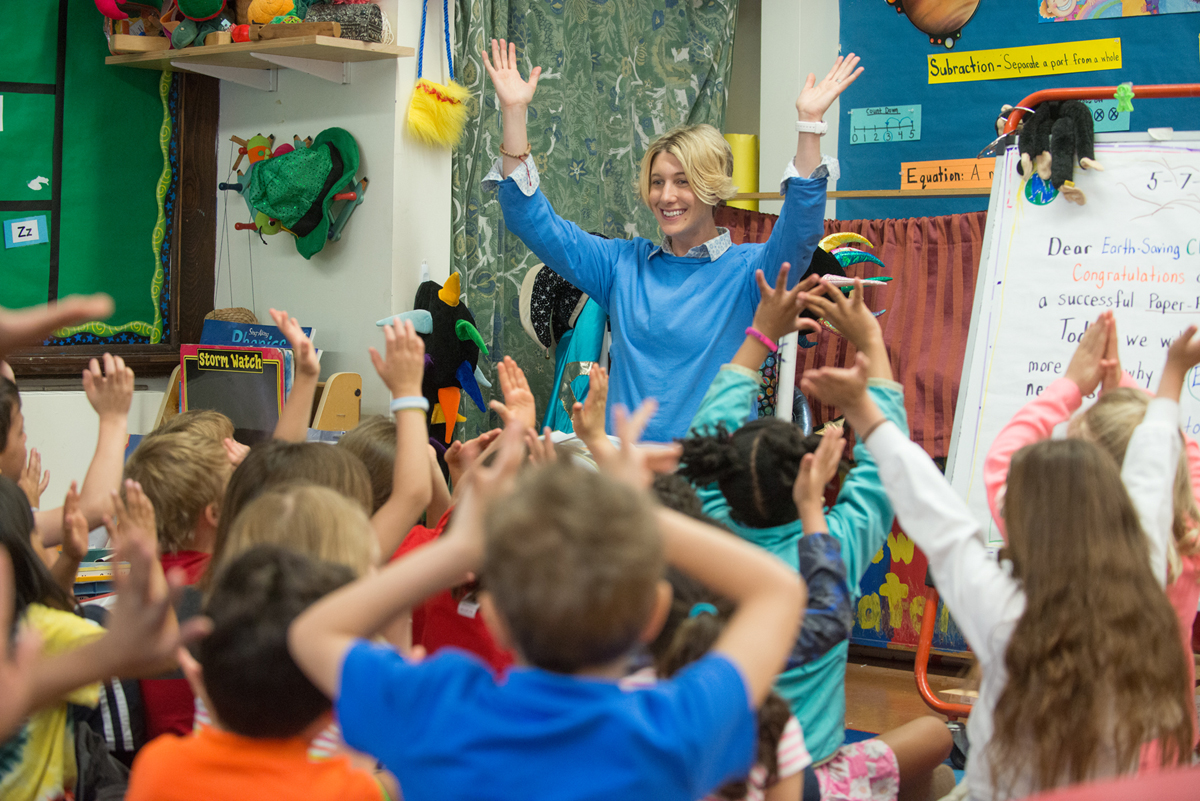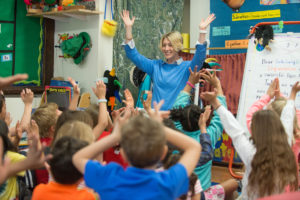Looking Ahead to Next Year

 For students, teachers, and parents alike, few events bring more hope and nervousness than the start of a new school year. As the summer winds down, many teachers begin to have conflicting feelings about the year ahead. We’re at once curious about our new students and daunted by the challenge of working with a new group. We have high hopes for a year filled with learning and growth, but the unknown blocks our view of the specifics of this future.
For students, teachers, and parents alike, few events bring more hope and nervousness than the start of a new school year. As the summer winds down, many teachers begin to have conflicting feelings about the year ahead. We’re at once curious about our new students and daunted by the challenge of working with a new group. We have high hopes for a year filled with learning and growth, but the unknown blocks our view of the specifics of this future.
The uncertainty is shared by students and parents. Students wonder: Who will be my new teacher? Will she care about me? Will she be nice or mean? Parents worry: Will this teacher understand my child? Does he care? Is he skilled? Will he listen to my concerns?
In my early years as a second grade teacher, in the midst of the pre-year prep work of making name tags, putting out books, and arranging furniture, I would panic as I thought about how little I knew of the children heading my way. I knew what second graders were like in general, but what about this particular group of second graders? Would they be outgoing and boisterous, or shy and reserved? Would they like these books I had gathered? Would there be many different learning styles among them, and would I be able to teach all of them well? What are the parents’ expectations? The more questions I thought of, the more anxious I would get.
Only two things seemed to quiet the questions. The first was gathering together all my favorite props—the chime, clock, magnetic lunch/attendance chart, and how-many-days-of-school Popsicle sticks. The second was establishing relationships with the children and their families before the first day of school. I wanted all of us—the students, their parents, and myself—to have enough information so that we could begin to form reassuring pictures of each other and the coming year.
Over the years, I’ve done my best to create this reassuring atmosphere, gathering ideas from colleagues along the way. Here are some practices that I’ve found helpful.
Observing students at the end of the previous year
My preparations for the new year begin near the end of the previous year. If possible, I go to observe next year’s students in their first grade classroom. I pay attention to the behavioral and academic expectations in the room, the classroom signals, and the ways in which conflicts are handled. I look at what’s on the walls and listen to the language used in the room. In addition, I notice things about the children individually: What are their temperaments and interests? What can they do academically? What social skills are they practicing?
The information I gather—sometimes after spending just twenty minutes in a room—is always invaluable. And I find most colleagues welcome such visits if I explain that my purpose is simply to prepare for next year.
Holding “press conferences” to answer children’s questions
As the school year comes to an end, I sometimes give fifteen- to twenty-minute “press conferences” in the first grade children’s classrooms or in mine. The purpose is to answer students’ questions—and set straight their misconceptions—about their next grade. I may be the sole question answerer, or I may ask a few students from my class to be fellow panelists.
Typically, the children moving up want to know that they can handle the changes that an older grade brings. Or they want to know if they’ll get to do the things their older friends and siblings talk about. “Will we have homework every night? When do we have recess? Will we do times [multiplication]?” When answering these questions, I try to be as accurate and reassuring as possible, and I encourage student answerers to do the same.
I want the incoming students to feel confident—and know that I’m confident—that their work during first grade has prepared them to do well in second grade.
Asking last year’s teachers about the incoming students
After going through students’ files, I have a conversation with their first grade teachers. I do this before the end of the school year or in August when we’re all back in the building setting up our rooms. I try to ask broad, open-ended questions to avoid limiting the teachers’ reflections. Some questions I typically ask are: What’s amazing about this child? What classroom activities does she like most? What has been challenging for him? What helps her overcome difficulties? What comforts him? What special needs does she have, and what do I need to know to address them? What should I know about the family?
I’ve found that a few minutes talking with these past teachers can give me important insights that would have taken me a long time to discover on my own.
Sending out a mailing in late summer
Two weeks before the first day of school, I send out a mailing to welcome children and parents and to cultivate pleasant expectation about our year ahead. A basic mailing might include just two items:
A letter to the child expressing my happiness that s/he will be in my class. I also try to give a small enjoyable task—for example, inviting the child to solve a fun mystery or to bring a book to share with classmates on the first day of school. (See sample at end of article.)
A letter to parents communicating my excitement about the year and welcoming them to take an active role in their child’s school life. (See sample at end of article.)
Visiting students in their homes
When possible, I visit students at home before the school year begins. When both the teacher and family feel comfortable with it, a short visit can be a powerful way to make an immediate school-home connection.
It’s important to present a visit sensitively and without pressuring the family. I always present a visit as a choice, not a requirement, and offer the option of meeting in the classroom, the local library, or some other place in case families prefer not to meet in their homes.
Each teacher’s personal style will guide the structure of the visits. Whatever form they take, visits are an opportunity for the children to show the teacher something of their life outside of school. One year I interviewed children and took photos of them standing near something or someone they were fond of. I made this into a bulletin board for the beginning of the year and continued the activity in school for those unable to have a pre-year meeting with me.
A head start to a successful year
These steps don’t erase all the uncertainty around the start of school, but they allow the children, their parents, and me to establish some connection and to have some sense of what to expect in the months ahead. And they get me to begin caring, well before the first day of school, about the young individuals and their families whom I am fortunate enough to have in my life.
August 21, 2004
Dear Parents,
I hope you’re enjoying the summer and looking forward to the start of school.
I’ve enclosed some questions to help you share with me insights about your child. This information is very helpful to my work. I also encourage you to set up a time for us to talk on the phone or in person in these next few weeks. To do this, leave a message at Wildwood (xxx-xxxx) or e-mail me.
I also invite you to take part in our classroom activities throughout the year. Here are just some of the ways you can join us:
- Coming to special events and performances
- Helping us go on field trips
- Assisting with art, cooking, or other special projects
- Mentoring and tutoring children in class
- Making special presentations that tie in with our studies
- Showing us your craft, work, or workplace
Finally, you can support your child’s school learning from home. Reading with your child and sharing stories with each other are powerful things you can do to enhance your child’s academic success.
I’m looking forward to a year of rich classroom experiences!
Warmly,
Michael Silverstone
August 21, 2004
Dear____________ ,
I’m so glad you will be in 2nd grade class C-4 this year.
I’ve put a few special things in this envelope, including pictures of your new classmates.
I got this postcard at a store in town. There’s a mystery about where the picture was taken. Can you help solve it?
Looking forward to our year together!
Love,
Mr. Silverstone
Michael Silverstone teaches second grade at Wildwood Elementary School in Amherst, Massachusetts. He is particularly interested in fostering early fluency in expressive arts (such as writing, theater, and music) and conflict resolution. He is the author of a number of biographies and nonfiction titles for young people, including Winona LaDuke: Restoring Land and Culture in Native America and Rigoberta Menchu: Defending Human Rights in Guatemala, both published by The Feminist Press.
Tags: Last Weeks of School, Summer